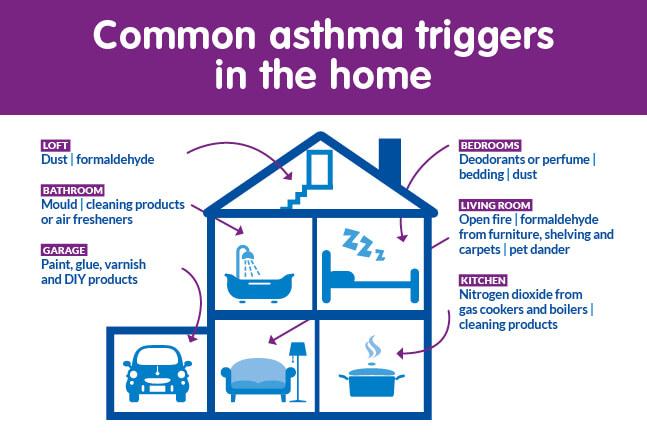Preventing asthma attacks is no easy task. Many potential triggers for this condition are in the air, and they are often too small to detect with the naked eye. The solution involves keeping the air in your home clean from any dust and other allergens that may make their way into your child’s lungs. With the help of Sears Clean, here are some cleaning products for various rooms of the house that are geared toward keeping the air free of harmful particles.
All around ways to prevent asthma attacks at home
The following are preventative measures meant for the entire house and not just a specific area. For example, avoid having animals in the house because pet dander is a trigger of its own, as well as the fact that fur can harbor large amounts of dust and even pollen that they can leave around the house. A second overall principle is to avoid clutter in the house, because a place that cannot be reached also cannot be cleaned, and this can mean dust and mold deposits. Finally, during allergy season be sure to run the air-conditioning and keep the windows closed. Keeping the windows closed will also prevent any symptoms that can be brought on by air pollution. Finally, frequent air duct, carpet, and upholstery cleanings should be used to remove any deep or unreachable triggers of asthma attacks.
The family room and bedrooms
These areas are tricky because they are often where people spend the most time, which means they will have the most dust, or other allergens. This is simply the result of the many people that go in and out of these areas each day. Keeping this room free of asthma triggers can start with simply covering the cushions in dust-proof covers. These will prevent allergens from working their way deep into the fibers of your furniture where they are more difficult to remove. For bedrooms, it is important to wash your child’s blankets at least once a week to get rid of any dust that may have settled on them throughout the course of the week.
Bathrooms
The moisture in your house’s bathrooms runs the potential of triggering an asthma attack itself, and allowing mold to grow which can also irritate peoples’ lungs. An easy way to get the moisture out of this area is to run an exhaust fan that leads to the outside of the house, taking any humid air with it. To manage the possibility for mold, avoid having carpets and wallpaper in the bathrooms and opt for a material like tile instead for the walls and floor. These surfaces provide almost no places for mold to hide and grow.
The Kitchen
This is another tricky room because of the amount of use it can receive during the week from cooking meals and eating. Make sure that all surfaces are wiped down and cleaned, this includes counters, the outsides and insides of cabinets, and even the floors. If it is a flat area, then scrub it down to keep dust-mites and allergens from accumulating. You should also inspect the pipes in places like beneath the sink and behind the refrigerator to find any leaks. Leaks can lead to standing water, which besides water damage, also provides a perfect environment for mold to grow. Be sure to put a stop to any leaks and clean up any puddles of standing water. Also, like in the bathroom, run an exhaust fan to keep strong smells and steam out.
The Basement
This may be the most complicated room in the house when it comes to keeping livable for a person with asthma because they are often humid, moldy, and full of dust. Follow the above principles of making sure there are no leaks or standing water to avoid mold, and clean any surfaces where dust can settle. Adding a dehumidifier is also a great step to keep moisture out of the air not only for the basement, but the house as a whole as well. Also, due to the potential for mold and water leaks, do your best to avoid carpeting in this part of the house and opt for a flat, cleanable surface as well. Sticking with the cement floor may be best for preventing many triggers of asthma attacks in the basement.








